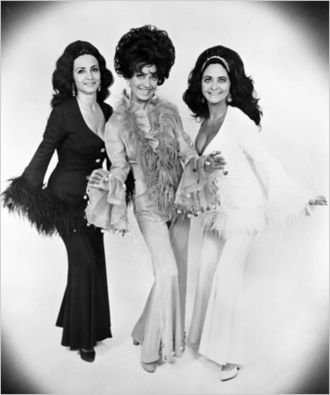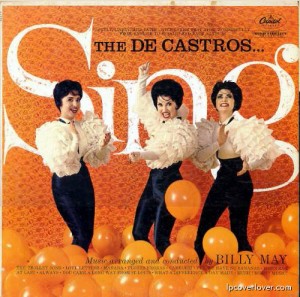 VUELOS CUBANOS “PETER PAN” (1960-1962) RECUERDAN EL ÉXODO DE NIÑOS CENTROAMERICANO (2013-2014).
VUELOS CUBANOS “PETER PAN” (1960-1962) RECUERDAN EL ÉXODO DE NIÑOS CENTROAMERICANO (2013-2014).
El Festival Internacional de Cine de Riverside exhibe un cortometraje sobre la Operación Pedro Pan.
El cubano Sergio Díaz, jefe de la Policía de Riverside, California, junto al cartel del cortometraje. 27 de julio de 2014. (EFE)
La crisis desatada por el incremento de menores centroamericanos que cruzan solos la frontera estadounidense ha traído a colación la historia de los niños cubanos que arribaron a Estados Unidos con la Operación Peter Pan, caso que ha inspiró un cortometraje de ficción presentado este domingo, reporta EFE.
Entre los asistentes a la exhibición del filme estaba Sergio Díaz, jefe de la Policía de Riverside (California) y uno de los más de 14.000 niños que entre los años 1960 y 1962 fueron enviados por sus progenitores desde Cuba hacia suelo estadounidense, en búsqueda de asilo político, en lo que constituyó uno de los capítulos más importantes del éxodo desde la Isla.
“El país ha cambiado, nadie fue a protestar cuando llegó el avión lleno de niños. Puedo decir que nunca me sentí asustado, siempre fueron muy amables conmigo”, declaró a EFE Díaz, quien comparó así su caso con las reacciones que ha suscitado la oleada migratoria de menores desde Honduras, El Salvador y Guatemala, en especial tras los sucesos ocurridos en Murrieta.
A comienzos de este mes, miembros de la Patrulla Fronteriza pretendieron trasladar en autobuses hasta un centro de procesamiento en la localidad de Murrieta, en el sur de California, a 150 menores inmigrantes, pero se vieron obligados a dar marcha atrás debido al bloqueo hecho por manifestantes opositores a la inmigración ilegal.
“Lo más importante de esta historia es el coraje que tienen los padres para salvar a sus hijos, de darles una esperanza de vida, sin saber si los volverán a ver, si se podrán reunir con ellos nuevamente”, manifestó Díaz.
Optimista de que la actual crisis se resolverá, Díaz también aseguró que la llegada de los niños centroamericanos no va a dejar en bancarrota a ninguna ciudad y que la comunidad debe entender esta realidad.
El jefe policial tenía siete años cuando abandonó su hogar en Quivacán, al sur de La Habana, y junto a decenas de niños se subió a un vuelo de la aerolínea Pan American con dirección a Miami. Fue recibido por una familia en Nuevo México, en donde se mantuvo refugiado más de seis meses hasta obtener una visa.
A lo largo de la Operación Peter Pan, la iglesia católica jugó un papel crucial a favor de los menores, en especial, el fallecido monseñor Bryan O. Walsh, quien al frente de la organización Caridades Católicas de la Arquidiócesis de Miami, y con el respaldo del Gobierno de Estados Unidos, gestionó la obtención de visas para los niños inmigrantes.
“En general los Pedro Pan hemos sido exitosos. Los inmigrantes cubanos hemos sido exitosos y no porque seamos una raza especial, sino porque hemos hecho el bien, porque nos han tratado bien”, resaltó Díaz.
El jefe de la Policía de Riverside asistió este domingo a la presentación del cortometraje Pedro Pan, escrito y dirigido por la ecuatoriana Andrea Puente.
“Estaba buscando una historia que reflejara parte de ese esfuerzo que hacen los padres por sus hijos y encontré a los niños Pedro Pan. Los padres de estos niños lo arriesgaron todo por salvar a sus hijos, es parecido a lo que mis padres hicieron”, explicó a EFE la directora, una inmigrante que llegó a Estados Unidos a la edad de 11 años.
Para Díaz, el film Pedro Pan, exhibido este domingo en el Festival Internacional de Cine de Riverside, llega justo a tiempo para aprender y recordar varias lecciones.
“No debemos dejarnos separar por el odio, sino buscar lo que tenemos en común todos: que queremos a nuestros hijos y queremos lo mejor para ellos”, apuntó.
Agencies/InternetPhotos/www.thecubanhistory.com
The Cuban History, Hollywood.
Arnoldo Varona,Editor.
CUBAN FLIGHTS “PETER PAN” “(1960-1962) REMINDING THE EXODUS OF CENTRAL AMERICAN’S CHILDREN (2013-2014).
International Film Festival of Riverside, California exhibits a short film about Operation Pedro Pan
The crisis triggered by the increase of Central American children who cross the U.S. border alone has brought up the story of Cuban children who arrived to the United States in Operation Peter Pan, a case that has inspired a short fiction film presented on Sunday, reports EFE .
Among those attending the screening of the film was Sergio Diaz, chief of police of Riverside (California) and one of the more than 14,000 children between 1960 and 1962 were sent by their parents from Cuba to U.S. soil in search of political asylum, in what was one of the most important chapters of exodus from the island
“The country has changed, no one was protesting when the plane full of kids came. I can say that I never felt scared, they were always very kind to me,” he told EFE Diaz, who compared and if the reactions that has attracted the juvenile migratory wave from Honduras, El Salvador and Guatemala, especially after the events in Murrieta.
Earlier this month, members of the Border Patrol tried to move in buses to a processing center in the town of Murrieta, in Southern California, 150 immigrant children, but were forced to turn back due to blockage done by opponents of illegal immigration protesters.
“The most important thing about this story is the courage of parents to save their children, giving them a life expectancy, not knowing if they’ll see if they can meet with them again,” Diaz said.
Optimistic that the current crisis will be resolved, Diaz also said that the arrival of Central American children will not leave any city bankrupt and that the community should understand this reality.
The police chief was seven years old when he left his home in Quivacán, south of Havana, and with dozens of children boarded a flight from the Pan American airlines flying towards Miami. He was received by a family in New Mexico, where he remained a refugee more than six months to obtain a visa.
Throughout Operation Peter Pan, the Catholic Church played a crucial role for children, especially the late Monsignor Bryan O. Walsh, who as head of the Catholic Charities of the Archdiocese of Miami, and the support of the Government of the United States, managed to obtain visas for immigrant children.
“Overall the Peter Pan have been successful. Cuban immigrants have been successful and not because we are a special breed, but because we have done good, because they have treated us well,” noted Diaz.
The head of the Riverside Police Sunday attended the presentation of the film Peter Pan, written and directed by Ecuadorian Andrea Puente.
“I was looking for a story that reflects part of that effort made by parents for their children and found children Peter Pan The parents of these children risked everything to save their children, it’s like what my parents did,” director explained to EFE, an immigrant who came to America at the age of 11 years.
For Diaz, the film Peter Pan, displayed Sunday at the International Film Festival in Riverside, arrives just in time to learn and remember several lessons.
“We must not allow ourselves to separate by hatred, but look what all have in common: we want our children and want the best for them,” he said.
Agencies / InternetPhotos / www.thecubanhistory.com
The Cuban History, Hollywood.
Arnoldo Varona, Editor









